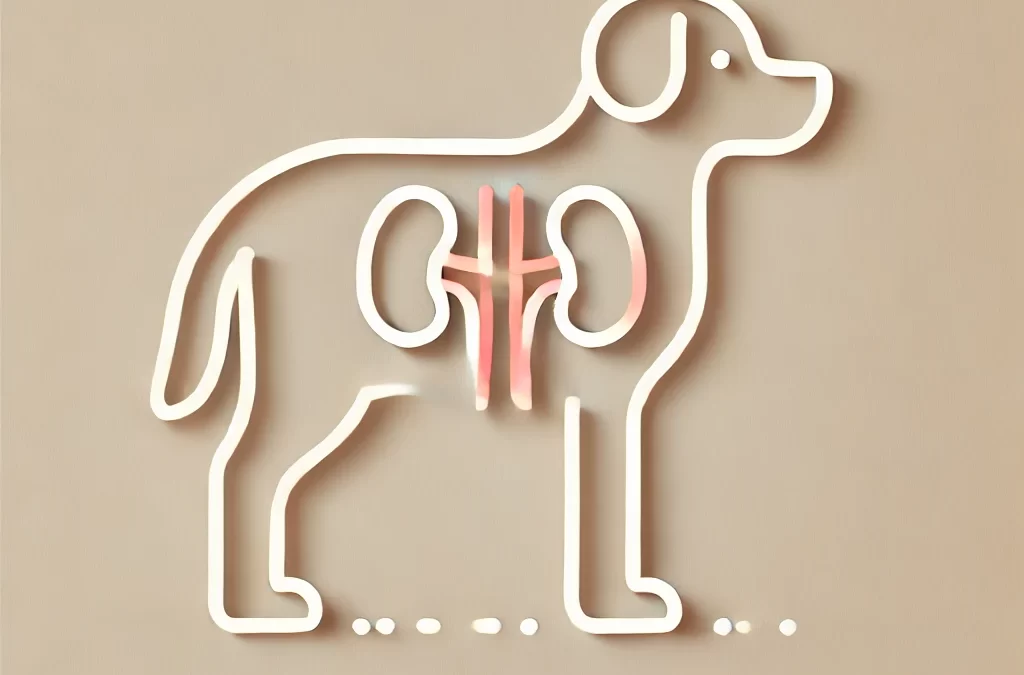
por TCMVET | 12 de dezembro de 2024 | Câncer e tumores caninos
O câncer renal em cães é relativamente raro, mas pode impactar significativamente a saúde do cão quando ocorre. Os sintomas geralmente aparecem gradualmente, tornando a detecção precoce desafiadora. A conscientização sobre os sinais potenciais pode ajudar os donos de animais de estimação a buscar cuidados veterinários oportunos.
Sintomas comuns de câncer renal em cães
- Aumento da sede e da micção (polidipsia e poliúria):
- Beber e urinar em excesso pode indicar comprometimento da função renal devido ao tumor.
- Loss of Appetite:
- Cães com câncer renal geralmente apresentam diminuição do apetite, o que leva à perda de peso.
- Weight Loss:
- Mesmo com a ingestão normal de alimentos, pode ocorrer perda de peso, pois o corpo gasta energia combatendo a doença.
- Vômitos e náuseas:
- A disfunção renal causada pelo câncer pode levar ao acúmulo de toxinas no sangue, causando problemas gastrointestinais.
- Dor ou inchaço abdominal:
- Os tumores podem causar inchaço visível ou desconforto quando o abdômen é tocado.
- Sangue na urina (hematúria):
- A urina pode parecer rosa ou vermelha devido ao sangramento do tumor.
- Lethargy:
- Cães com câncer renal podem apresentar níveis reduzidos de energia e relutância em se envolver em atividades normais.
- Difficulty Breathing:
- Em casos avançados, os tumores podem pressionar os órgãos circundantes, causando problemas respiratórios.
- Gengivas pálidas:
- A anemia, frequentemente associada ao câncer renal, pode fazer com que as gengivas pareçam pálidas.
- Mau hálito (hálito urêmico):
- O acúmulo de toxinas no sangue devido à redução da função renal pode resultar em um odor semelhante ao de amônia.
Quando consultar um veterinário
Se seu cão apresentar qualquer combinação desses sintomas, é essencial procurar atendimento veterinário imediatamente. Embora esses sinais não sejam exclusivos do câncer renal, eles geralmente indicam um problema de saúde subjacente sério que requer diagnóstico e tratamento.
Diagnóstico de câncer renal em cães
Um veterinário normalmente usará os seguintes métodos para confirmar o câncer renal:
- Exame físico: Para detectar inchaço ou desconforto.
- Urinálise: Para verificar se há sangue ou substâncias anormais na urina.
- Exames de sangue: Para avaliar a função renal e detectar quaisquer anormalidades.
- Imagem: Ultrassonografia, raios X ou tomografias computadorizadas podem identificar tumores e sua extensão.
- Biópsia: Uma amostra do tumor pode ser retirada para confirmar sua natureza.
Tratamento e Prognóstico
As opções de tratamento dependem do tipo e estágio do tumor, mas podem incluir:
- Cirurgia: Remoção do rim afetado (nefrectomia) se o câncer for localizado.
- Quimioterapia: Para certos tipos de câncer, a quimioterapia pode retardar a progressão.
- Cuidados de suporte: Controle da dor, hidratação e suporte nutricional para manter a qualidade de vida.
A detecção precoce melhora os resultados do tratamento, por isso exames veterinários regulares são essenciais, especialmente para cães idosos.
Ao reconhecer esses sintomas e agir rapidamente, você pode dar ao seu cão a melhor chance de receber cuidados eficazes e manter uma boa qualidade de vida.
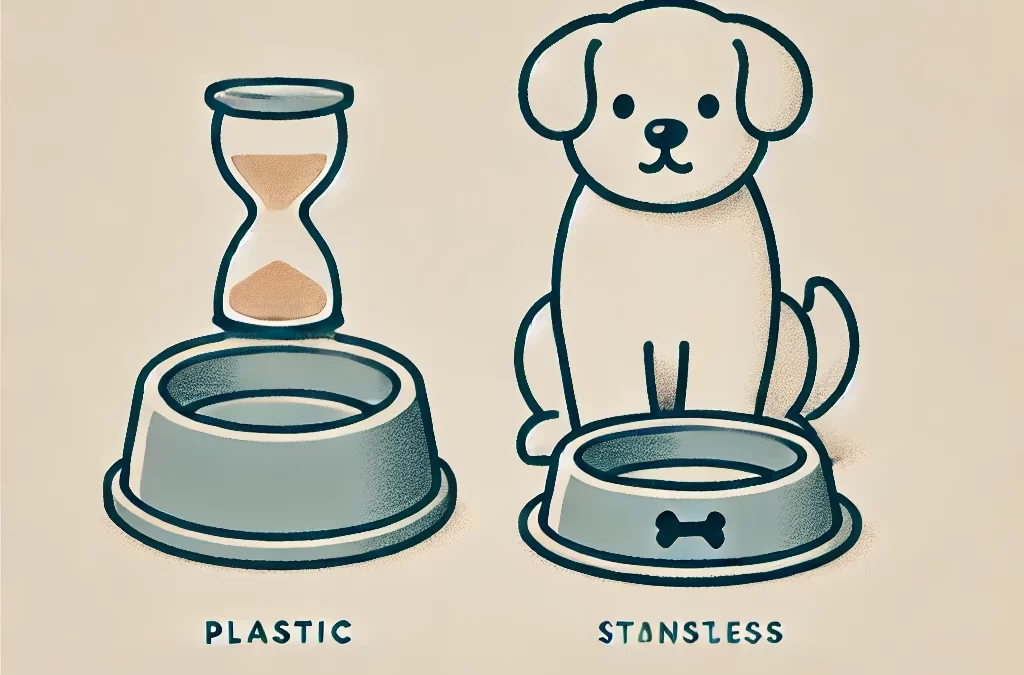
por TCMVET | 11 de dezembro de 2024 | Câncer e tumores caninos
O plástico está em todo lugar em nossas vidas diárias, de recipientes de comida a itens domésticos e até mesmo em produtos projetados para nossos amigos peludos. Mas esse material aparentemente inócuo pode representar uma ameaça à saúde de nossos cães? Estudos emergentes sugerem que a exposição prolongada a certos tipos de plástico pode aumentar o risco de câncer em cães. Vamos explorar a ciência e o que os donos de animais de estimação podem fazer para proteger seus animais de estimação.
Os perigos ocultos dos plásticos
Muitos tipos de plásticos contêm produtos químicos nocivos, como bisfenol A (BPA), ftalatos e cloreto de polivinila (PVC). Esses produtos químicos são frequentemente usados para tornar o plástico durável, flexível ou transparente. No entanto, eles podem vazar para alimentos, água ou até mesmo para o meio ambiente, especialmente quando os plásticos são aquecidos, arranhados ou degradados.
Em animais, esses produtos químicos podem atuar como disruptores endócrinos, interferindo na função hormonal. A exposição prolongada pode levar a alterações celulares, estresse oxidativo e até mesmo à formação de tumores, aumentando a probabilidade de câncer. Para cães, cujos hábitos diários geralmente incluem mastigar, lamber e contato próximo com vários materiais, os riscos são compostos.
Fontes diárias de exposição ao plástico para cães
- Tigelas de comida e água: Muitos donos de cães usam tigelas de plástico sem saber, que podem liberar substâncias nocivas, especialmente se arranhadas ou expostas à luz solar.
- Brinquedos de mastigar: Brinquedos de plástico de baixa qualidade geralmente contêm materiais não regulamentados que podem representar um risco quando ingeridos ou mastigados extensivamente.
- Embalagem:Biscoitos, ração e outros produtos para cães geralmente são armazenados em embalagens plásticas, que podem liberar produtos químicos nos alimentos.
- Artigos para o lar:Os cães frequentemente entram em contato com objetos de plástico pela casa, desde recipientes até móveis.
Riscos de câncer associados ao plástico
Embora as ligações diretas entre exposição ao plástico e câncer em cães ainda estejam em estudo, evidências de pesquisas humanas e animais indicam uma relação preocupante. Em cães, cânceres como tumores mamários, câncer testicular e linfoma podem ser influenciados por toxinas ambientais, incluindo aquelas encontradas no plástico. Raças menores ou cães com condições de saúde preexistentes podem ser especialmente vulneráveis.
Passos para reduzir a exposição ao plástico
Os donos de animais de estimação podem tomar medidas proativas para minimizar a exposição de seus cães a plásticos nocivos:
- Mude para tigelas mais seguras: Use tigelas de aço inoxidável, cerâmica ou vidro para comida e água em vez de tigelas de plástico.
- Escolha brinquedos de alta qualidade: Opte por brinquedos não tóxicos, livres de BPA ou feitos de materiais naturais, como borracha.
- Repense o armazenamento: Guarde a comida e as guloseimas para cães em recipientes herméticos de vidro ou aço inoxidável em vez de deixá-los na embalagem plástica original.
- Inspecione sua casa: Limite o acesso do seu cão a itens de plástico de baixa qualidade que podem ser mastigados ou ingeridos.
- Evite aquecer plásticos: Nunca coloque alimentos ou guloseimas no micro-ondas em recipientes de plástico, pois o calor aumenta a lixiviação química.
Defendendo Padrões Mais Seguros
Além das escolhas pessoais, os donos de animais de estimação podem defender melhores padrões de segurança na indústria de produtos para animais de estimação. Apoiar marcas que priorizam materiais não tóxicos e práticas sustentáveis envia uma mensagem poderosa. Além disso, manter-se informado sobre recalls de produtos ou pesquisas emergentes pode ajudar a proteger seu cão de riscos ocultos.
O quadro geral
Embora o plástico seja uma parte onipresente da vida moderna, seus potenciais impactos à saúde não podem ser ignorados. Para nossos cães, reduzir a exposição a plásticos nocivos é uma maneira simples, mas eficaz, de apoiar sua saúde e bem-estar a longo prazo. Ao fazer escolhas conscientes e espalhar a conscientização, podemos garantir que nossos animais de estimação vivam vidas mais felizes e saudáveis.
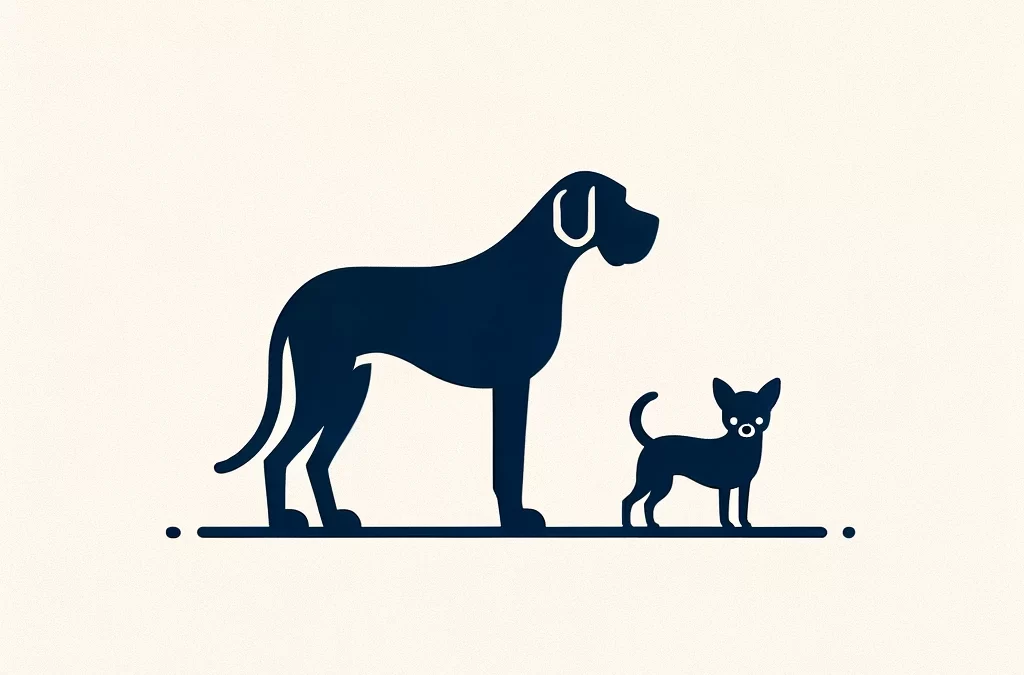
por TCMVET | 11 de dezembro de 2024 | Câncer e tumores caninos
Quando se trata de cães, o tamanho importa — mas não apenas da maneira que normalmente pensamos. Enquanto cães grandes são admirados por sua força e cães pequenos por seu charme, estudos recentes descobriram uma conexão surpreendente entre o tamanho de um cão e seu risco de desenvolver câncer. Vamos mergulhar nessa ligação intrigante e explorar o que isso significa para os donos de animais de estimação.
A ciência por trás do tamanho e do risco de câncer
Estudos mostram que raças maiores, como Dogue Alemão, Bernese Mountain Dog e Rottweiler, são mais propensas a certos tipos de câncer em comparação com suas contrapartes menores. Mas por quê? A resposta está na biologia. Cães grandes crescem mais rápido e têm mais células em seus corpos. Essa atividade celular aumentada aumenta as chances de mutações, o que pode levar ao câncer.
Por outro lado, raças pequenas como Chihuahuas e Dachshunds tendem a ter um risco menor de câncer, mas não são completamente imunes. Certos tipos de câncer, como tumores de mastócitos, ainda podem afetar cães menores, geralmente devido a predisposições genéticas em vez de tamanho.
Crescimento rápido: uma espada de dois gumes
Raças grandes passam por surtos de crescimento rápido durante a fase de filhote, colocando uma pressão imensa em seus corpos. Esse crescimento rápido pode resultar em uma divisão celular menos estável, o que aumenta o risco de comportamento celular anormal ao longo do tempo. Além disso, as demandas metabólicas de cães maiores podem acelerar o envelhecimento, tornando-os mais suscetíveis a doenças, incluindo câncer, à medida que envelhecem.
Longevidade e risco de câncer
Cães pequenos geralmente vivem significativamente mais do que raças grandes. Embora essa longevidade dê aos cães pequenos mais tempo para desenvolver condições relacionadas à idade, isso também significa que seu crescimento mais lento e renovação celular podem protegê-los de cânceres de início precoce comumente vistos em raças maiores. Em contraste, a vida útil mais curta de cães maiores geralmente se correlaciona com uma maior prevalência de cânceres agressivos em uma idade mais jovem.
O que os donos de animais de estimação podem fazer
Os donos de animais de estimação podem tomar medidas proativas para minimizar os riscos de câncer, independentemente do tamanho do seu cão. Check-ups veterinários regulares, dietas balanceadas e rotinas de exercícios adequadas são essenciais. Para raças grandes, atenção especial deve ser dada à manutenção de um peso saudável, pois a obesidade pode agravar ainda mais os riscos de câncer. Cães pequenos, embora menos propensos a cânceres relacionados ao tamanho, ainda se beneficiam de exames genéticos para identificar riscos hereditários precocemente.
Redefinindo “Tamanho Importa”
A ligação entre tamanho e risco de câncer nos desafia a repensar nossa abordagem aos cuidados com cães. Embora não possamos mudar o tamanho de um cão, entender como ele influencia sua saúde pode nos ajudar a tomar decisões informadas. Da escolha de raças à adaptação de rotinas de cuidados, esse conhecimento capacita os donos de animais de estimação a dar a seus amigos peludos a melhor chance de uma vida longa e saudável.
No final, seja grande ou pequeno, todo cão merece amor, atenção e cuidados de saúde proativos. Ao nos mantermos informados, todos nós podemos desempenhar um papel na redução dos riscos de câncer e garantir que nossos companheiros caninos prosperem.
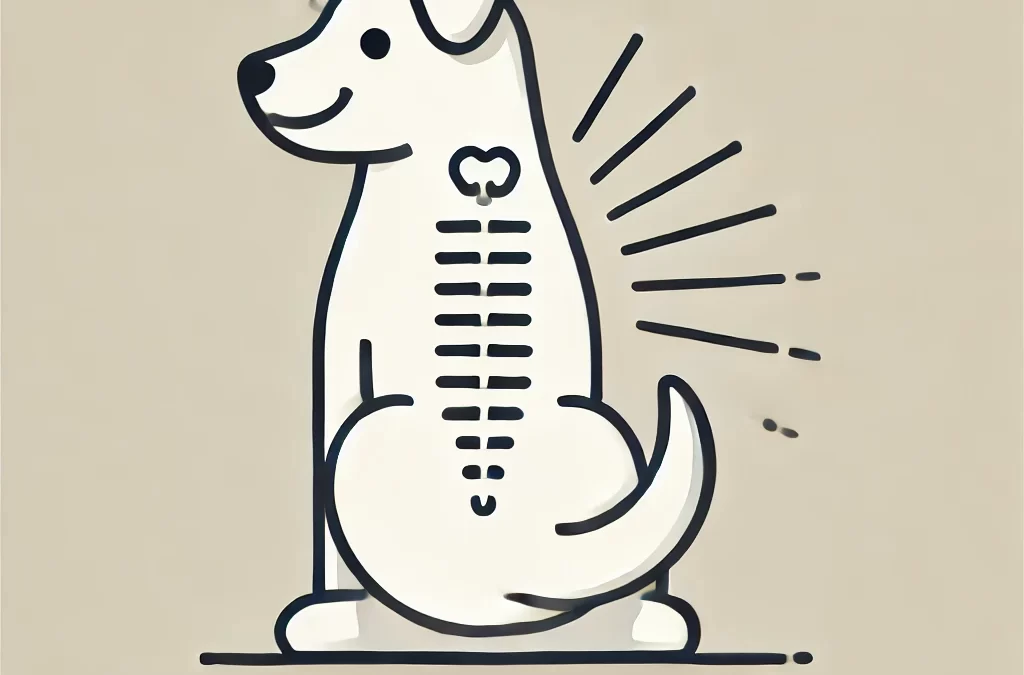
por TCMVET | 9 de dezembro de 2024 | Câncer e tumores caninos
Tumores espinhais em cães, embora raros, podem impactar severamente sua mobilidade e qualidade de vida. Esses tumores podem se desenvolver dentro ou ao redor da coluna vertebral, afetando a função do sistema nervoso. A detecção precoce e o gerenciamento adequado são essenciais para fornecer o melhor cuidado para seu amigo peludo. Aqui está um guia abrangente sobre os tipos de tumores espinhais em cães e seus sintomas, causas e opções de tratamento.
Tipos comuns de tumores espinhais em cães
- Tumores Intramedulares
- Descrição: Esses tumores se originam dentro da própria medula espinhal. Eles frequentemente surgem de células gliais, que dão suporte ao sistema nervoso.
- Exemplos: Astrocitomas, ependimomas e oligodendrogliomas
- Sintomas: Fraqueza gradual, incoordenação e possível paralisia em casos graves
- Tratamento: Cirurgia (se possível), radioterapia e cuidados de suporte
- Tumores extradurais
- Descrição: Esses tumores ocorrem fora da medula espinhal, mas dentro do canal espinhal, frequentemente comprimindo a medula e causando problemas neurológicos.
- Exemplos: Osteossarcomas, fibrossarcomas e linfomas
- Sintomas: Dor nas costas, dificuldade para caminhar e fraqueza muscular
- Tratamento: Remoção cirúrgica, quimioterapia ou radiação, dependendo do tipo de tumor
- Tumores Intradurais-Extramedulares
- Descrição: Localizados dentro do canal espinhal, mas fora da medula espinhal, esses tumores crescem nas meninges ou raízes nervosas circundantes.
- Exemplos: Meningiomas, tumores da bainha nervosa (schwannomas)
- Sintomas: Dor, incoordenação e possível incontinência urinária ou intestinal
- Tratamento: Cirurgia e radioterapia
- Tumores Vertebrais
- Descrição: Esses tumores surgem dos ossos da coluna, causando instabilidade estrutural e potencial compressão da medula espinhal.
- Exemplos: Osteossarcoma, condrossarcoma
- Sintomas: Dor intensa, inchaço e dificuldade para ficar de pé ou andar
- Tratamento: Cirurgia, quimioterapia e controle da dor
Symptoms of Spinal Tumors in Dogs
Os sintomas dos tumores espinhais podem variar dependendo da localização e do tamanho do tumor, mas os sinais comuns incluem:
- Relutância em se mover ou brincar
- Dificuldade para caminhar ou arrastar membros
- Dor ou sensibilidade nas costas ou pescoço
- Perda do controle da bexiga ou do intestino
- Mudanças repentinas de comportamento ou postura
Causas e Fatores de Risco
Tumores espinhais em cães podem ser causados por:
- Predisposição genética: Certas raças, como pastores alemães e golden retrievers, podem apresentar maior risco.
- Age: Cães mais velhos são mais propensos a desenvolver tumores na coluna.
- Metástase do câncer: Tumores de outras partes do corpo podem se espalhar para a coluna.
Diagnóstico e Tratamento
Os veterinários usam vários métodos para diagnosticar tumores na coluna:
- Exame neurológico: Avalia reflexos, coordenação e resposta à dor.
- Imagem: Raios X, ressonância magnética ou tomografia computadorizada para localizar e avaliar o tumor.
- Biópsia: Confirma o tipo de tumor para tratamento direcionado.
As opções de tratamento incluem:
- Cirurgia: O método preferido para tumores acessíveis e operáveis.
- Radioterapia: Usado para tumores inoperáveis ou residuais pós-cirurgia.
- Quimioterapia: Eficaz para alguns tumores metastáticos ou primários da coluna vertebral.
- Gerenciamento da dor: Essencial para melhorar a qualidade de vida do cão.
Apoiando seu cão na recuperação
Os cuidados com cães com tumores na coluna devem incluir:
- Fornecer uma cama macia e de suporte para evitar úlceras de pressão
- Auxiliar na mobilidade por meio de arreios ou carrinhos
- Manter uma dieta nutritiva para apoiar a saúde geral
- Acompanhamento regular com o veterinário para monitorar o progresso
Conclusão
Tumores espinhais em cães exigem atenção imediata e cuidados especializados. Embora o prognóstico dependa do tipo de tumor e da progressão, os avanços na medicina veterinária tornaram os tratamentos mais eficazes. Ao entender os sintomas e as opções disponíveis, você pode garantir que seu cão receba os melhores cuidados e suporte.
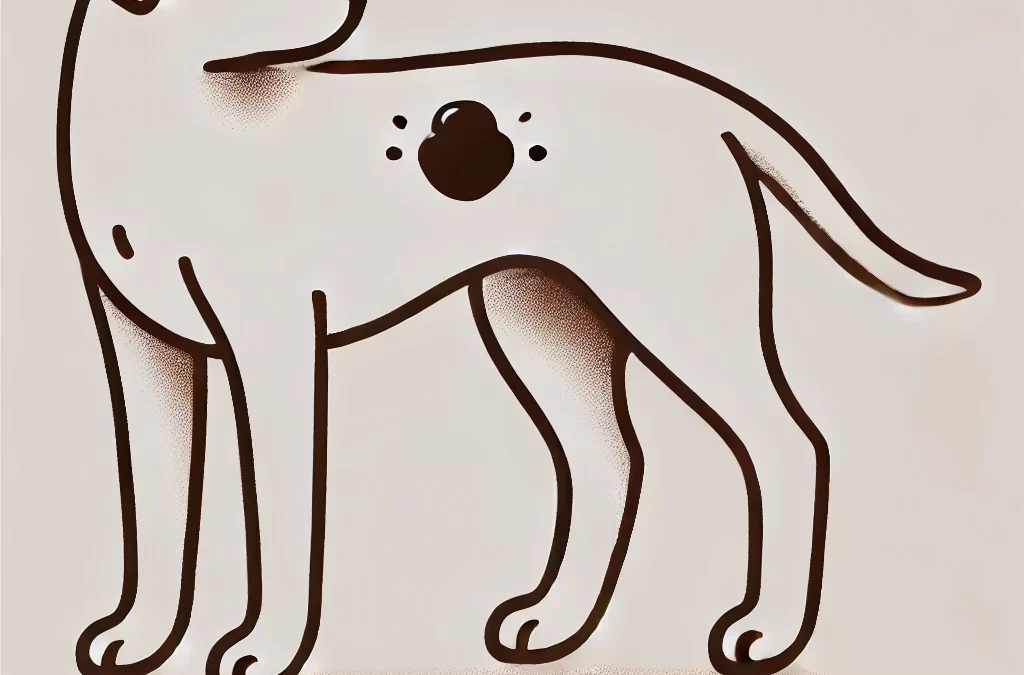
por TCMVET | 9 de dezembro de 2024 | Câncer e tumores caninos
A saúde da pele em cães é frequentemente um espelho de seu bem-estar geral, mas algumas condições podem ser intrigantes até mesmo para os donos de animais de estimação mais atentos. Uma dessas condições raras é epiteliomas cornificantes, um tipo de tumor benigno de pele que pode causar preocupação devido à sua aparência e efeitos. Vamos nos aprofundar nessa condição dermatológica incomum, suas causas, tratamentos e o que a torna um desafio único na saúde canina.
O que são epiteliomas cornificantes?
Epiteliomas cornificantes são tumores benignos que se originam de glândulas sebáceas, especificamente o epitélio (células da pele) responsável pela produção de queratina. Esses tumores geralmente se apresentam como crescimentos nodulares, semelhantes a verrugas, na pele de um cão. Embora não sejam fatais, seu potencial de causar desconforto ou infecção significa que não devem ser ignorados.
O que causa epiteliomas cornificantes?
A causa exata dos epiteliomas cornificantes não é totalmente compreendida, mas os fatores contribuintes podem incluir:
- Predisposição genética: Raças como Cocker Spaniels, Beagles e Huskies Siberianos são mais propensas a desenvolver esses crescimentos.
- Desequilíbrios hormonais: A atividade das glândulas sebáceas pode ser influenciada por alterações hormonais, principalmente em cães mais velhos.
- Deficiências alimentares: A má nutrição pode levar a desequilíbrios na saúde da pele, potencialmente agravando condições como epiteliomas.
Reconhecendo os sintomas
Epiteliomas cornificantes geralmente aparecem como:
- Pequenos nódulos firmes com textura semelhante a uma verruga
- Cor amarelada ou cerosa devido ao acúmulo de queratina
- Localizado ao redor da cabeça, pescoço ou costas, mas pode ocorrer em qualquer lugar
- Ocasionalmente acompanhada de vermelhidão ou inflamação se ocorrer infecção secundária
Embora esses crescimentos sejam benignos, mudanças rápidas no tamanho, cor ou textura devem ser avaliadas por um veterinário para descartar malignidades.
Diagnosticando Epiteliomas Cornificantes
O diagnóstico geralmente envolve:
- Exame físico: Um veterinário avaliará o tamanho, a localização e a aparência dos crescimentos.
- Aspiração por agulha fina (PAAF): Uma amostra de células é extraída e analisada para confirmar a natureza do tumor.
- Biópsia: Em alguns casos, uma biópsia pode ser necessária para diferenciar entre epiteliomas benignos e outras doenças de pele ou cânceres.
Opções de tratamento
O tratamento depende da gravidade e do impacto dos epiteliomas na qualidade de vida do seu cão.
- Monitoramento
Para crescimentos pequenos e não problemáticos, o monitoramento regular geralmente é suficiente.
- Certifique-se de que a área permaneça limpa e livre de infecções.
- Use tratamentos tópicos calmantes se recomendado pelo seu veterinário.
- Remoção cirúrgica
Se os crescimentos estiverem causando desconforto, infecções recorrentes ou problemas estéticos, a remoção cirúrgica é uma solução comum.
- Técnicas minimamente invasivas, como cirurgia a laser, podem reduzir o tempo de recuperação.
- Terapias Tópicas ou Sistêmicas
- Retinoides ou suplementos de vitamina A podem regular a produção de queratina.
- Antibióticos podem ser prescritos para infecções bacterianas secundárias.
Abordagens inovadoras e naturais
Para proprietários que buscam complementar tratamentos convencionais com cuidados holísticos:
- Ácidos gordurosos de omega-3: Eles podem reduzir a inflamação e promover a saúde geral da pele.
- Remédios herbais: Calêndula e aloe vera podem acalmar áreas irritadas.
- Ajustes dietéticos: Uma dieta rica em antioxidantes e proteínas de alta qualidade auxilia na regeneração da pele.
Medidas preventivas
Embora nem todos os casos de epiteliomas cornificantes possam ser prevenidos, estas etapas podem ajudar a manter a saúde ideal da pele:
- Tratamento regular: Mantém a pele limpa e promove a detecção precoce de anormalidades.
- Dieta balanceada: Fortalece o sistema imunológico e reduz a probabilidade de problemas de pele.
- Visitas veterinárias de rotina: A intervenção precoce é fundamental para controlar qualquer condição de pele.
Um desafio único na dermatologia canina
Epiteliomas cornificantes destacam a importância de entender e tratar até mesmo condições raras em cães. Embora benignos, esses crescimentos podem impactar o conforto e a aparência do seu animal de estimação, tornando essencial o tratamento rápido e eficaz. Ao se manter informado e trabalhar em estreita colaboração com seu veterinário, você pode garantir que seu cão permaneça saudável, feliz e próspero.





